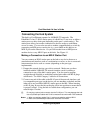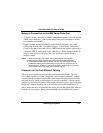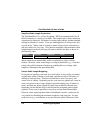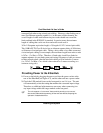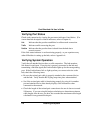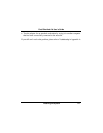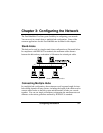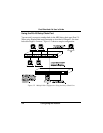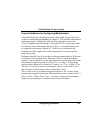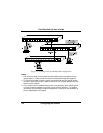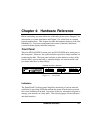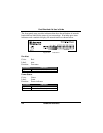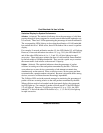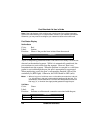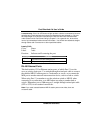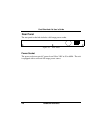
Fast EtherHub-12s User’s Guide
Configuring the Network 3-3
Precise Guidelines for Configuring Multiple Hubs
A detailed formula for calculating maximum cable length was provided in the
section on
Precise Cable Length Budgeting in Chapter 2. This formula stated that the
maximum length of cabling that can be run from end-node to end-node is:
367m
≥ S(repeater equivalent length) + S(length of CAT-5 twisted-pair cable)
For the daisy chain of three hubs shown in Figure 3-3, communications must
be supported for node pairs AB and AC. In this case, first determine the
limitations on cable length found on the longest path (i.e., the path with the
longest delay time).
Remember that this Class II device has an inherent repeater delay of 90 bit time
or 80 meters of twisted-pair cable. Therefore, if node A and B are linked to
repeaters 1 and 3 respectively (each using 50 meters of twisted-pair cable), then
the maximum length from node A to B is 367m - (3 x 80m) = 127m and the
total inter-hub cabling will be limited to 27 meters (i.e., 127m - 2x50m = 27m).
Therefore, if you use 15 meters of twisted-pair cable to connect hubs 1 and 2,
then 12 meters of cable can be used to connect hubs 2 and 3.
Then, if node A and C are linked to adjacent repeaters 1 and 2 in this system,
the maximum length of twisted-pair cable that can be used to connect node C to
hub 2 is 367m - 2*80m - 50m - 15m = 142 meters. However, the maximum
length for any twisted-pair connection cannot exceed 100 meters.



